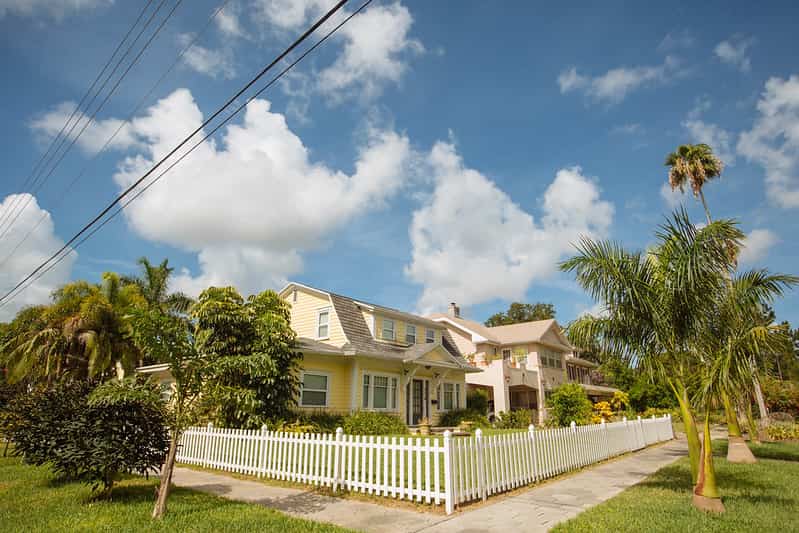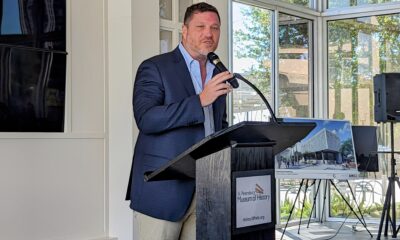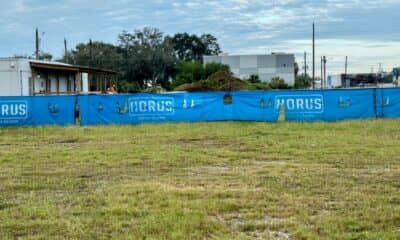Know
Real estate trends, Part 3: St. Petersburg makes progress toward housing equity

The Urban Land Institute annually gathers local and national industry leaders and development visionaries to offer key insights into forces shaping the real estate industry in the Tampa-St. Petersburg area. The Feb. 4 ULI Tampa Bay 2021 trends conference showed that St. Pete is well-positioned to meet much of what’s ahead in the industry.
The St. Pete Catalyst has talked with two experts — Larry Silvestri, founder of commercial real estate firm Silvestri Law, and Anne Pollack, managing member and commercial real estate attorney at Fletcher Fischer Pollack P.L. — to get their take on how the emerging trends highlighted during the conference are playing out in St. Petersburg.
In the third part of this three-part series, we’ll look at the growing focus on equity in housing and in the real estate industry.
Rethinking neighborhoods
There’s been a $16 trillion cost to the United States economy from the failure to address racial gaps between Blacks and whites over the past 20 years.
The real estate industry can, and must, play an important role in addressing those gaps, said Byron Carlock, U.S. real estate practice leader for PwC.

Byron Carlock
“A home-owning family has a household net worth of around $200,000 with most of that net worth being in their primary residence. A renter household has a net worth of $5,000,” Carlock said during the ULI Tampa Bay trends conference.
Changes such as how credit scores are calculated and how mortgages are underwritten will make a dent, he said, “but it’s going to take all of us in the industry to rethink the way we lay out neighborhoods, looking at new building techniques, allowing modular and tiny houses to come into the urban core for new types of neighborhoods, and then make these available to those who need them.”
There’s a stark difference between white and Black home ownership rates, nationally and in the Tampa-St. Pete area, with a greater percentage of white families owning homes than Black families, said Tracy Hadden Loh, a Fellow with the Anne T. and Robert M. Bass Center for Transformative Placemaking at Brookings Institution.
There’s also a mismatch between the housing that’s available and the housing that’s needed, Loh said.

Tracy Hadden Loh
Millennials are not forming the same household arrangements as their baby boomer parents, and multi-generational and non-nuclear families make up 20 percent of all households nationwide, Loh said during the ULI trends conference.
“The problem is we still have mostly the same housing inventory as 1968 and we haven’t started building different product to accommodate a different housing reality. Our nationwide housing supply has not kept up with the massive demand for affordable, quality, studio and one-bedroom units in prime neighborhoods, especially rental units,” Loh said. “This structural oversupply of large single-family homes with three and four bedrooms, instead of smaller units, means millennial households have to contort themselves to work with the supply. Those contortions are inefficient and that has an impact on prices.”
St. Petersburg is on track to address those concerns, said Anne Pollack, managing member at Fletcher Fischer Pollack.
She cited the growing popularity of YIMBY (Yes In My Backyard), an organization that is advocating for policies that encourage more housing that people of all incomes can afford.
“I think getting creative and allowing for more flexibility in the type of housing you can build will help the city be able to provide more housing,” Pollack said. “There’s a balance between having a mix of housing in a neighborhood, which has a lot of positive aspects, and balancing that with neighborhoods that want to stay single family. Hopefully we’ll find ways to compromise and bring more housing to the city.”
St. Petersburg has been pretty good at thinking outside of the box, said Larry Silvestri of Silvestri Law. For instance, the city already has approved zoning changes that hold promise for greater inclusivity, including “tiny apartments.” Developers who build apartments that are 750 square feet or smaller don’t have to provide parking for tenants, a measure that can save thousands of dollars in the construction process and is intended to result in lower rents.
There’s a strong business case to be made for providing more housing that’s affordable, Silvestri said.
“We need more affordable housing so that people who are just entering their careers can live reasonably comfortably in the areas where they are working, without having to commute from Pasco County to downtown St. Pete,” he said.

Bowen Arnold
The responsibility for affordable housing cannot just be up to developers, said Bowen Arnold, manager and principal at DDA Development. The Tampa firm is working with BackStreets Capital in St. Petersburg on a four-story, 204-unit apartment development at 6090 Central Ave. that will be 90 percent workforce housing.
Local governments can contribute money or tax abatements, change parking and green space requirements, and allow housing to be built on land that is zoned for industrial or other non-residential uses in order to keep projects affordable, Arnold said during the ULI trends conference.
“Everyone benefits when we have more housing opportunities for people. Everyone benefits so everyone should participate,” Arnold said.
ULI’s challenge
Real estate, especially commercial real estate, is traditionally a white male industry. But Pollack has seen growing efforts to empower and support women, and to ensure that events, conferences and seminars include a diverse group of speakers including people of color.
During the trends conference, ULI leaders unveiled the Equitable Development Challenge, an initiative to address issues of racial inequity. For details click here.
The 21-day initiative kicks off Feb. 15 and has four goals:
- Educate the ULI membership and broader community about systemic racism and barriers and identify allies and champions committed to racial equity in real estate.
- Increase the number of Black, Indigenous and people of color members and leaders at ULI Tampa Bay.
- Facilitate growing the pipeline of professionals who are Black, Indigenous and people of color in the commercial real estate industry.
- Strengthen ULI’s impact work focused on health, equity and resilience.
A related issue that impacts housing as well as other real estate sectors is ESG, or environmental, social and corporate governance, Pollack said.
“Cities need to look at that and the real estate industry really needs to be part of that as the plan for the city moves forward — where new housing and where new business and new retail goes. It’s broader than just the bottom line. It’s thinking about the community,” she said.







